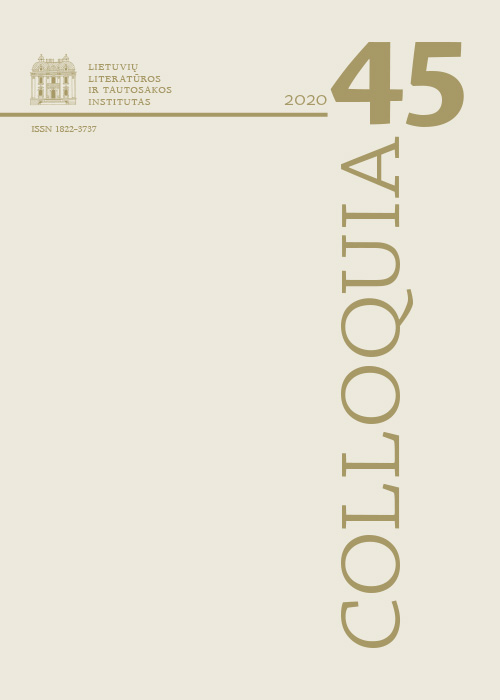Poetic Discourse in the Early Works of Sigitas Geda
Abstract
The article examines poetic discourse in the early works of Sigitas Geda— these include Pėdos [Footprints, 1966], Geda’s first published collection of poems, and Strazdas [A Thrush, 1967], a long narrative poem. Poetic discourse is loosely defined in the article as a kind of modelling of meaningful speech in textual practice. The particular literary works selected are read as manifestations of a type of poetic discourse. The article presents an interpretative explication of this particular type and contrasts this approach with established mythopoetic readings of Geda’s oeuvre.
In an attempt to examine poetic discourse enunciation, the article describes qualities of the textual fabric, e.g. modes of cohesion, part-towhole relations, collocations, dynamic vectors (such as crescendos), figures of the speaker, object representation, etc.
The article singles out and discusses three aspects of the works in question: the particularities of plural enunciation and the way the enunciator projects itself as the ground for the totality of the represented world; the particular cognitive semiotic construct wherein a traditional landscape is represented as a diagrammatic sign that generates signification related to the past, integrating selected modern objects; a micro-plot of ecstatic experience by way of an immediate subjective encounter with the immensity of the past; and epiphanic images of primitive cosmology that emerge in moments of extreme intensity, as attained in the process of enunciation by the selfprojecting imagination.
Downloads
Most read articles by the same author(s)
- Paulius Jevsejevas, Sigitas Geda’s Pėdos – Explorations in Idiolectic Description , Colloquia: Vol. 34 (2015)
- Paulius Jevsejevas, For There to Be Meaning, There Must Be Fiction , Colloquia: Vol. 39 (2017)




